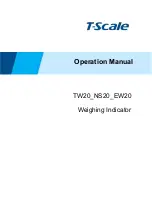
2.2. MOUNTING
a) Provide a cut out hole on the switchgear panel according to the dimension below.
Figure 2: Recommended out-cut.
2. Installation Guide
Before installing the power meter, please check that the environment meets the following condition:
• Operating temperature -10 Celcius to +55 Celcius.
• Humidity 5% to 95%, non-condensing
• Dust free environmental away from electrical noise and radiation
2.1. PRECAUTIONS
b) Insert the power meter through the hole and slide in the retainer clip along the slots on left and right sides
or bottom and top sides of the power meter until the device is tightly secured on the switchgear panel. The
orientation of the retainer clips is shown in Figure 1.
The retainer clip can be removed by lifting the tab lightly at the handle end.
c) Connect the metering voltage input, current input, communication and auxiliary according to the wiring
schemes shown in Section 2.3, Figure 3 to 6 on the next page.
d) The recommended wire size is as below:
• Voltage input and auxiliary - AWG16~22
• Current input - AWG12~18
• Modbus-RTU - AWG22 or thicker, shielded twisted pair *
NOTE:
Polarity marks must be followed as shown for CTs (S1 and S2). Please make sure the
power to the current metering input is totally shunted. Under no circumstances can the CT
connection be left in open circuit. Use a CT shorting block if necessary.
*- Applicable for DPM380 only
e) When connecting the power meter, please make sure the polarity to the terminal is correctly aligned.
f) If the Modbus-RTU* is used, it can be connected up to 32 devices in a daisy chain fashion and the cable total
length should not be more than 1000m.
For Modbus-RTU* connection, avoid running the cable near sources of electrical noise. The
network cable shield should be grounded at only one end.








































